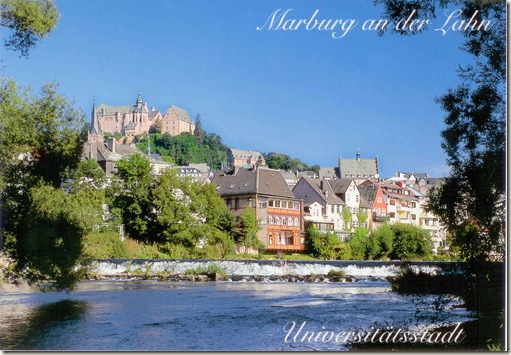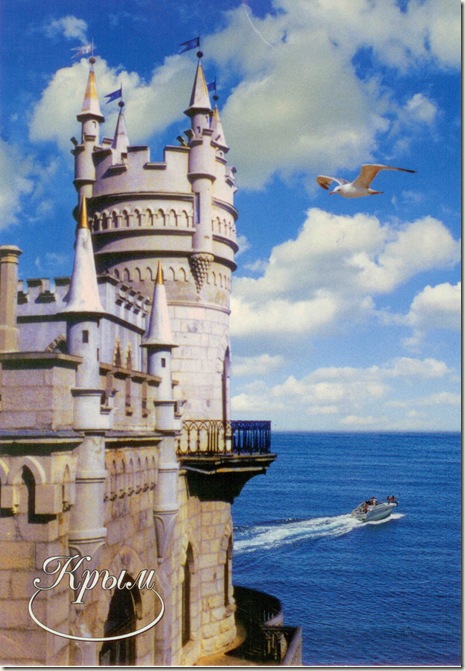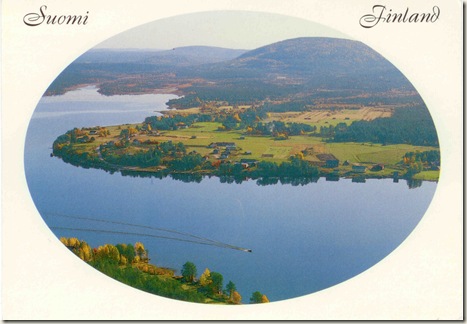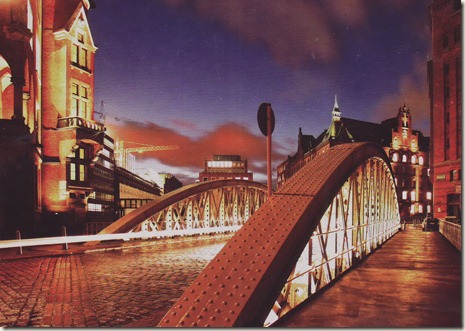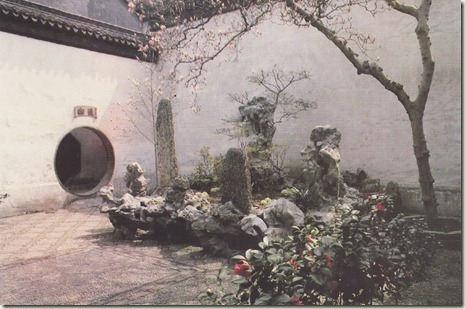Country: Germany
Distance: 1,017 km
Travel time: 4 days
On postcard: Marburg
Marburg is a city in the state of Hessen, Germany, on the River Lahn. It is the main town of the Marburg-Biedenkopf district and its population, as of March 2010, was 79,911.
Founding and early history
Like many settlements, Marburg developed at the crossroads of two important early medieval highways: the trade route linking Cologne and Prague and the trade route from the North Sea to the Alps and on to Italy, the former crossing the river Lahn here. The settlement was protected and customs were raised by a small castle built during the 9th or 10th century by the Giso. Marburg has been a town since 1140, as proven by coins. From the Gisos, it fell around that time to the Landgraves of Thuringia, residing on the Wartburg above Eisenach.
St. Elisabeth
In 1228 the widowed princess-langravine of Thuringia, Elisabeth, chose Marburg as her dowager seat, as she did not get along well with her brother-in-law, the new Landgrave. The countess dedicated her life to the sick and would become after her early death in 1231, aged 24, one of the most eminent female saints, St. Elisabeth of Hungary. She was canonized in 1235.
Capital of Hesse
In 1264, St Elizabeth's daughter Sophie of Brabant, succeeded in winning the Landgraviate of Hesse, hitherto connected to Thuringia, for her son Henry. Marburg (alongside Kassel) was one of the capitals of Hesse from that time until about 1540. Following the first division of the landgraviate, it was the capital of Marburg from 1485 to 1500 and again between 1567 and 1605. Hesse was one of the more powerful second-tier principalities in Germany. Its "old enemy" was the Archbishopric of Mainz, one of the Prince-electors, who competed with Hesse in many wars and conflicts for coveted territory, stretching over several centuries.
After 1605, Marburg became just another provincial town, known mostly for its university. It became a virtual backwater for two centuries after the Thirty Years' War, 1618–1648, when it was fought over by Hessen-Darmstadt and Hessen-Kassel (or Hessen-Cassel). The Hessian territory around Marburg lost more than two thirds of its population, which was more than in any later wars (including World War I and World War II) combined.
Reformation
Marburg is the seat of the oldest protestant university in the world, the University of Marburg (Philipps-Universität-Marburg), founded in 1527. It is one of the six classical "university villages" in Germany, the other five being Freiburg, Göttingen, Heidelberg, and Tübingen, as well as the city of Gießen, which is located 30 km south of Marburg.
In 1529, Philipp I of Hesse arranged the Marburg Colloquy, to propitiate Martin Luther and Huldrych Zwingli.
Romanticism
Owing to its neglect during the entire 18th century Marburg – like Rye or Chartres – survived as a relatively intact Gothic town, simply because there was no money spent on any new architecture or expansion. When Romanticism became the dominant cultural and artistic paradigm in Germany, Marburg became interesting once again, and many of the leaders of the movement lived, taught, or studied in Marburg. They formed a circle of friends that was of great importance, especially in literature, philology, folklore, and law. The group included Friedrich Karl von Savigny, the most important jurist of his day and father of the Roman Law adaptation in Germany; the poets, writers, and social activists Achim von Arnim, Clemens Brentano, and especially the latter's sister and former's later wife, Bettina von Arnim. Most famous internationally, however, were the Brothers Grimm, who collected many of their fairy tales here – Rapunzel's Tower stands in Amönau near Marburg, and across the Lahn hills, in the area called Schwalm, little girls' costumes included a red hood.
It has to be said, however, that this circle had disappeared from Marburg by the 1820s, and for another 45 years, Marburg became a Hessian backwater again.
Prussian town
In the Austro-Prussian War of 1866, the reactionary Prince-elector of Hesse had backed Austria; Prussia won, and invaded (without any bloodshed) and annexed Hesse-Kassel (as well as Hanover, the City of Frankfurt, and other territories) north of the Main river, while likewise the pro-Austrian Hesse-Darmstadt remained independent. For Marburg, this turn of events was very positive, because Prussia decided to make Marburg its main administrative centre in this part of the new province Hesse-Nassau and to turn the University of Marburg into the regional academic centre. Thus, Marburg's rise as an administrative and university city began; as the Prussian university system was one of the best in the world at the time, Marburg attracted many respected scholars. However, there was hardly any industry to speak of, so students, professors, and civil servants – who generally had enough but not much money and paid very little in taxes – dominated the town, which tended to be very conservative.
20th century
Franz von Papen, vice-chancellor of Germany in 1934, delivered an anti-Nazi speech at the University of Marburg on 17 June. This contributed to several of von Papen's staff being murdered by the Nazis.
From 1942 to 1945, the whole city of Marburg was turned into a hospital with schools and government buildings turned into wards to augment the existing hospitals. By the spring of 1945, there were over 20,000 patients – mostly wounded German soldiers. As a result of its being designated a hospital city, there was not much damage from bombings except along the railroad tracks.
In 1945, Marburg became President and Field Marshal Paul von Hindenburg's final resting place. His grave is in theElisabethkirche. He is also an honorary citizen of the town.
Marburg is also now home to one of the most progressive schools for the blind in the world. Street crossings are equipped with "walk" and "don't walk" signs that also emit sounds enabling the blind to know what the signs are "saying".
Main sights
Architecturally Marburg is famous both for its medieval churches and for its castle. In particular the Elisabethkirche one of the two or three first purely Gothic churches north of the Alps outside of France is an archetype of Gothic architecture in Germany.
More important, however, is Marburg's city as such, an unspoilt, spire-dominated, castle-crowned Gothic/Renaissance city on a hill, intact because Marburg was an extreme backwater between 1600 and 1850. Unlike, for example, Rothenburg ob der Tauber, Marburg regained some of its importance in later centuries, so it is not a "museum village" but rather a student-dominated university town.
Much of the physical attractiveness of Marburg today is the legacy of the legendary Lord Mayor Dr. Hanno Drechsler (in office 1970-1992), who promoted urban renewal and the restoration, for the first time, by object and not by area; i.e., areas were not pulled down but rather buildings restored. Thus, at a time when other cities were still pulling down medieval quarters, Marburg already protected its unique heritage. Marburg also had one of the first pedestrian zones in Germany. Marburg's Altstadtsanierung (since 1972) has received many awards and prizes.
